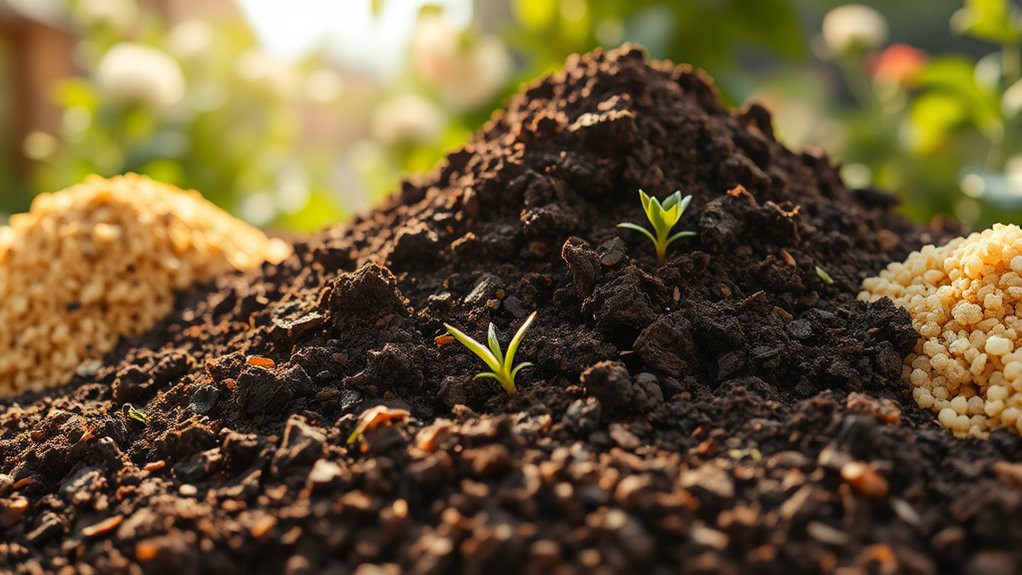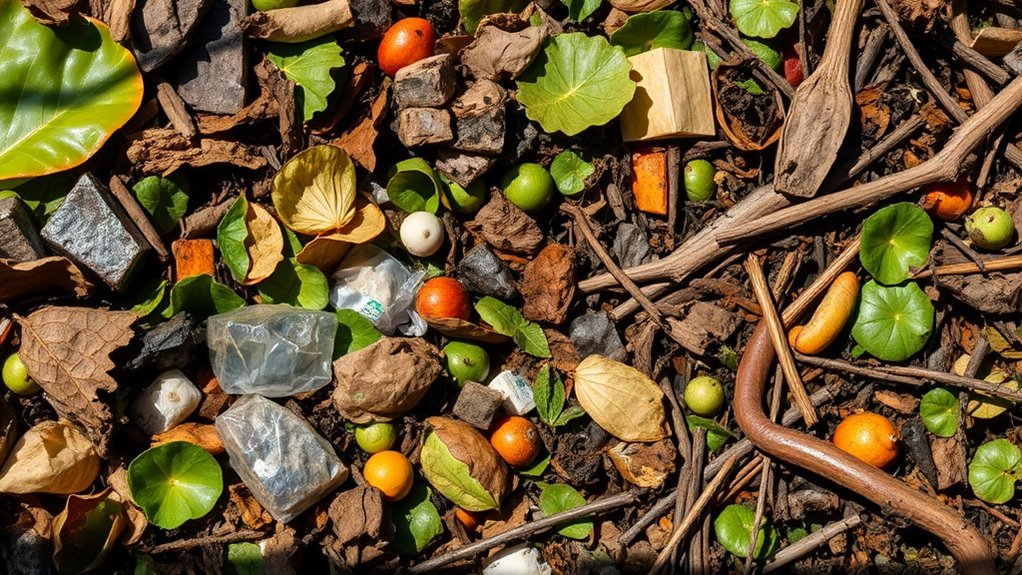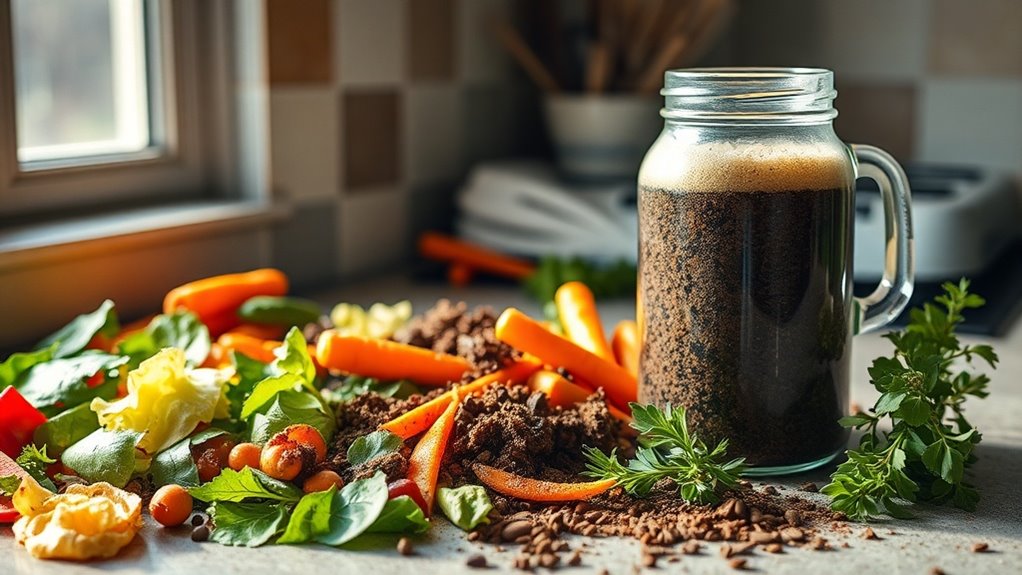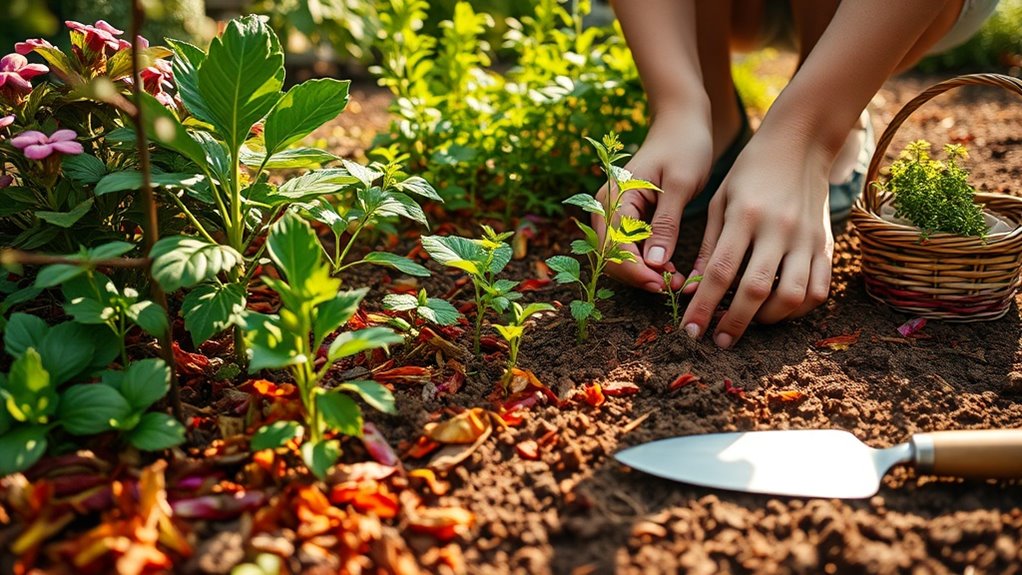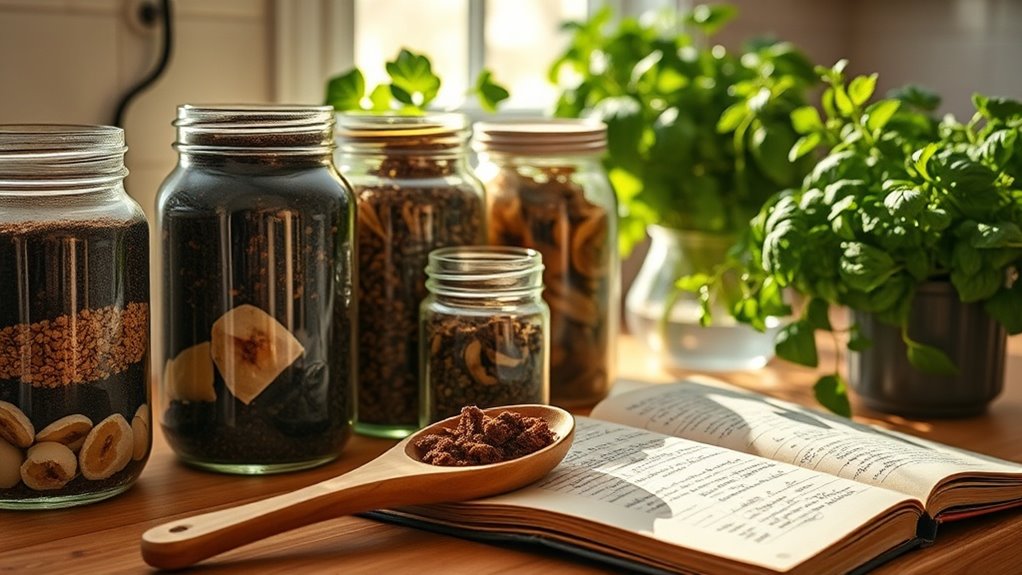Top 5 Soil Ingredients Every Garden Needs to Thrive
When it comes to gardening, the soil is your foundation. You can’t overlook the top five ingredients that make it thrive. Each component plays a crucial role in nurturing your plants. Organic matter, clay, sand, silt, and essential nutrients work together to create a balanced ecosystem. Understanding how they interact can significantly impact your garden’s success. So, what exactly do these ingredients bring to the table, and how can you best integrate them into your soil?
Key Takeaways
- Organic Matter: Enhances soil structure, promotes aeration, and supports beneficial microorganisms for nutrient release and improved soil health.
- Clay: Influences soil texture, retains moisture, and balances drainage capabilities when mixed with organic matter for better plant growth.
- Sand: Improves drainage and soil aeration, preventing compaction while allowing roots to access nutrients and moisture effectively.
- Silt: Acts as a bridge between sand and clay, enhancing water retention and drainage while retaining essential nutrients for plants.
- Nutrients: Provide essential elements like nitrogen, phosphorus, and potassium, fueling plant growth and requiring regular soil testing for optimal health.
Organic Matter
Organic matter is the lifeblood of any thriving garden, acting as a crucial component that enriches the soil. It enhances soil structure, promotes aeration, and retains moisture, ensuring your plants have access to essential soil nutrients.
When you incorporate organic matter, you’re not just feeding the plants; you’re fostering a robust ecosystem that supports beneficial microorganisms. These microbes break down organic materials, releasing vital nutrients that enhance growth and resilience. Additionally, organic matter helps to improve soil health, making it more conducive to plant development and resistance against diseases.
Clay
While organic matter lays the foundation for healthy soil, clay plays a significant role in influencing soil texture and drainage.
This fine, dense material retains moisture and nutrients, making them available to your plants.
However, too much clay can lead to poor drainage, creating a soggy environment that suffocates roots.
By balancing clay with organic matter, you can enhance aeration and improve overall soil structure.
When you manage clay effectively, you’re setting your garden up for success.
Embrace its properties, and your plants will thrive, drawing on the moisture and nutrients stored within this essential soil ingredient. Additionally, incorporating natural tricks for healthier soil can further optimize clay’s benefits and promote a vibrant garden ecosystem.
Sand
Sand is a crucial component of garden soil that dramatically influences its structure and drainage capabilities. By incorporating sand, you enhance soil aeration, allowing roots to breathe and access essential nutrients more effectively.
This gritty ingredient prevents soil compaction, which can stifle plant growth and water movement. When you mix sand with organic matter, you create a well-balanced environment that retains moisture while still draining excess water.
Whether you’re growing vegetables or flowers, the right amount of sand promotes healthy root development and robust plant life. Additionally, sand contributes to soil health improvement, making it an invaluable asset for any garden. Embrace sand as a foundational element, and watch your garden thrive like never before.
Silt
Silt plays a vital role in creating fertile garden soil, acting as a bridge between the coarse particles of sand and the finer clays.
This fine-textured ingredient improves soil structure, enhances water retention, and promotes better drainage.
When you incorporate silt into your garden, you’re setting the stage for a thriving ecosystem. Signs of struggling garden soil can often be mitigated by ensuring a balanced mix of soil components, including silt.
Here are three benefits of silt:
- Moisture Retention: Silt holds water effectively, ensuring your plants stay hydrated.
- Nutrient Availability: It helps retain essential nutrients, making them accessible to plant roots.
- Soil Aeration: Silt improves soil aeration, allowing roots to breathe and grow stronger.
Nutrients
Nutrients are the lifeblood of any garden, fueling plant growth and development. They provide essential elements like nitrogen, phosphorus, and potassium, which are crucial for healthy foliage, robust roots, and vibrant blooms. Without adequate nutrients, your plants may struggle, showing stunted growth or discolored leaves. You can enhance your soil’s nutrient profile through natural fertilizers like compost or organic matter. Regular soil testing helps you understand what your garden specifically needs, allowing you to tailor your amendments effectively. Additionally, incorporating homemade fertilizer from kitchen scraps can further boost nutrient availability in your garden.

